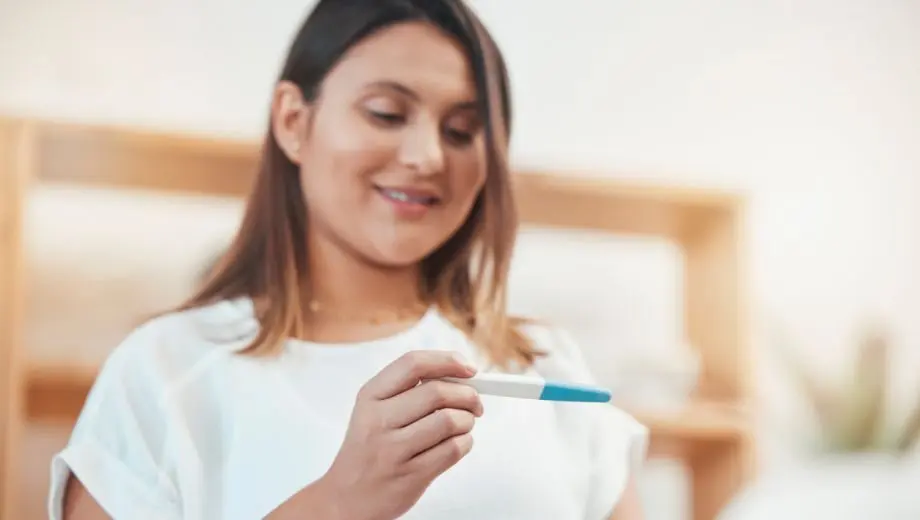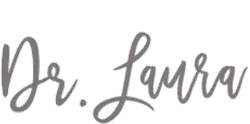
Are you ready to take charge of your health?I help women achieve vibrant health through all phases of life with a personalized, holistic approach.
SIGN UP FOR MY NEWSLETTER AND GET YOUR FREE GIFT:
A SMART WOMAN'S GUIDE TO HORMONE BALANCE

SIGN UP FOR MY NEWSLETTER AND GET YOUR FREE GIFT:
A SMART WOMAN'S GUIDE TO HORMONE BALANCE

If you’re like many reproductive-age women, you may have found yourself wondering about your hormone levels. Perhaps you’ve asked your doctor for hormone testing, only to be told, “Everything is fine.” Even worse, you’ve been given vague statements like, “you have poor egg quality” or “you’re infertile,” without any clear explanation.
These frustrating experiences are far too common. Many smart, proactive women seek to understand their hormones but are left feeling unsupported or confused. Some take matters into their own hands by ordering hormone tests online, only to struggle with interpreting the results. If you’re one of those women—kudos to you for being proactive about your health! It’s unfortunate when your healthcare provider doesn’t offer the guidance you need.
In this post, we’ll dive into which hormone tests to request on cycle day 3, why it’s the optimal time for testing, and what your results might reveal. Knowing your hormone levels is the first step toward understanding your reproductive health and taking control of your fertility.
Cycle day 3 is a crucial time in your menstrual cycle, particularly when assessing your reproductive hormone health. Day 1 of your menstrual cycle is the first day of actual menstrual blood (not spotting). On day 3, you are fully in your follicular phase. This phase is the best time to measure key hormones like FSH, LH, prolactin, estradiol, and AMH. These hormones are critical for understanding your overall reproductive health.
Testing during this time provides valuable insights into how well your pituitary gland and ovaries are communicating and functioning.
Here’s a breakdown of the most important hormone levels to test on cycle day 3 and what they indicate about your reproductive health:
FSH is produced by the pituitary gland and plays a pivotal role in the maturation of follicles (eggs) in your ovaries. You want your FSH levels to be within an optimal range for healthy ovarian function. High FSH levels can indicate that your ovaries aren’t responding well to brain signals, which could suggest fertility issues or early ovarian insufficiency.
Functional Ranges for FSH:
Note: FSH alone does not give a complete picture of fertility, so if your levels are high, it’s essential to retest and assess other hormones.
Estradiol is the primary form of estrogen and is crucial for healthy ovulation and overall cycle balance. It rises steadily after cycle day 1, peaking around days 12 to 14 to trigger ovulation. An optimal balance between estradiol and FSH is necessary for a healthy cycle.
Optimal Day 3 Estradiol: 30 – 50 pg/mL
Low estradiol levels can delay or prevent ovulation, while elevated levels might suggest hormonal imbalances such as estrogen dominance or issues with ovulatory function.
LH is responsible for triggering ovulation when it surges mid-cycle. On cycle day 3, LH levels should be in balance with FSH. If LH is too high, it may signal a condition like polycystic ovary syndrome (PCOS).
Optimal LH on Day 3: LH should closely match FSH levels, around 4 – 7 mIU/mL.
Prolactin is a hormone that can delay ovulation by suppressing FSH. While commonly elevated during breastfeeding, high prolactin levels can also be caused by stress, inflammation, or PCOS.
Optimal Day 3 Prolactin: Under 12 ng/mL
High prolactin levels may block ovulation and cause low progesterone, affecting fertility. Interestingly, dopamine reduces prolactin levels, and herbs like Vitex (Chaste Tree), which influence dopamine, can help balance prolactin naturally.
AMH is produced by the follicles in your ovaries and offers insight into your ovarian reserve, but it’s often misunderstood. While it gives a sense of egg quantity, it doesn’t measure egg quality. AMH levels can be influenced by age and health conditions such as PCOS. To learn more, read AMH: What Does It Really Mean For Your Fertility?
Functional AMH Ranges:
Understanding your hormone levels is the first step toward optimizing your fertility and overall cycle health. Whether you’re trying to conceive or simply want to ensure your hormones are balanced, getting tested on cycle day 3 provides essential insights. If you’re ready to take action, I can help guide you through the testing process and create a personalized plan to improve your hormone health naturally.
Book an appointment with me today to get your hormones tested and start working on a targeted action plan to boost your fertility and support your overall reproductive wellness. Let’s get your hormones back in balance!

Dr. Laura Paris is a women’s health specialist who provides Acupuncture and Functional Medicine care at her two clinics in Capitola and Monterey, California. She also works with women remotely in the United States through telehealth appointments. Learn more about Laura here, and message her directly here.
Click the button to talk to Dr Laura on a 20-minute discovery phone call ($67)
Hi,
I have my estradiol 108 on day 3, but all the other hormones in optimal range. Does this indicate Estrogen dominance?
Not necessarily, but estradiol at this level can suppress FSH which could be a problem.
Hi! Hoping for some help interpreting my day 3 labs. I’m 39 and still having regular periods that can tend to be heavier day 1 & 2. My understanding is that the elevated estradiol could be an ovarian cyst which I do have a hx of two rupturing in the past. If it’s not that, what else would be an indicator of what’s going on.
Estradiol 181 (follicular range 21-151)
LH 1.7 (follicular range 1.8-11.8)
FSH 3.3 (follicular range 3.0-8.1)
These were the only labs checked. Thank you!
There are lots of reasons that estrogen can be high, cysts are definitely one of them so given your history that’s probably the first thing to check.
According to the lab I got my day 3 labs done at “normal” ranges for estradiol are as follows:
Interpretation Ranges:
Follicular 26.6 to 161.0
Preovulatory Peak 187.0 to 382.0
Luteal 32.7 to 201.0
Postmenopausal 5.37 to 38.4
Some sources say anything below 75 on Day 3 is in the normal range, but some sources (including this one) say the range for estradiol should be between 30 and 50 on day 3. Does a slightly elevated estradiol on day 3 (mine is 57.2) indicate a problem?
It depends! With estradiol, I like to look at the bigger picture – a woman’s goals for testing, symptoms, estrogen metabolism and elimination, levels throughout the cycle, progesterone levels, etc. These cycle day 3 reference ranges are ideal for fertility, but it doesn’t necessarily mean it’s a problem for an individual to be outside these ranges.
What can I do if my cycles are too short but I am ovulating? I’ve checked my progesterone and it shows I’ve ovulated.
Ovulation can occur without optimal progesterone. Thyroid hormones play a part in this as well.
What about day 2 estradiol of 23pg/ml? The internet said to test on day 2 if flow is short. I have scant flow on day 1 and 3 and it only lasts 3 days. Day 2 is the most flow. I feel awful before and the week of my period. I feel very depressed, horrible anxiety, I have hot flashes and can’t sleep. I am only 36 but have MS. I think I could benefit from some estriol cream but I’m nervous about hormones as I don’t respond well to fluctuations. Estrogen has been shown to benefit MS. I’ve tried small doses of progesterone cream and it helps a little but not with the depression and it makes me wake up too early. I can’t take higher doses because of GABA receptor issues.
Are these values measured in pg/ml or pmol/L?
Hello my my fsh was a 23.9, my estradiol is a 18 and my LH is. 9.6 on the 3rd day of cycle. I know the fsh is still high but the estradiol is low what does that indicate?
All it indicates is that your estradiol is low.